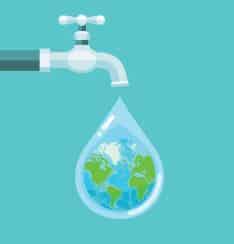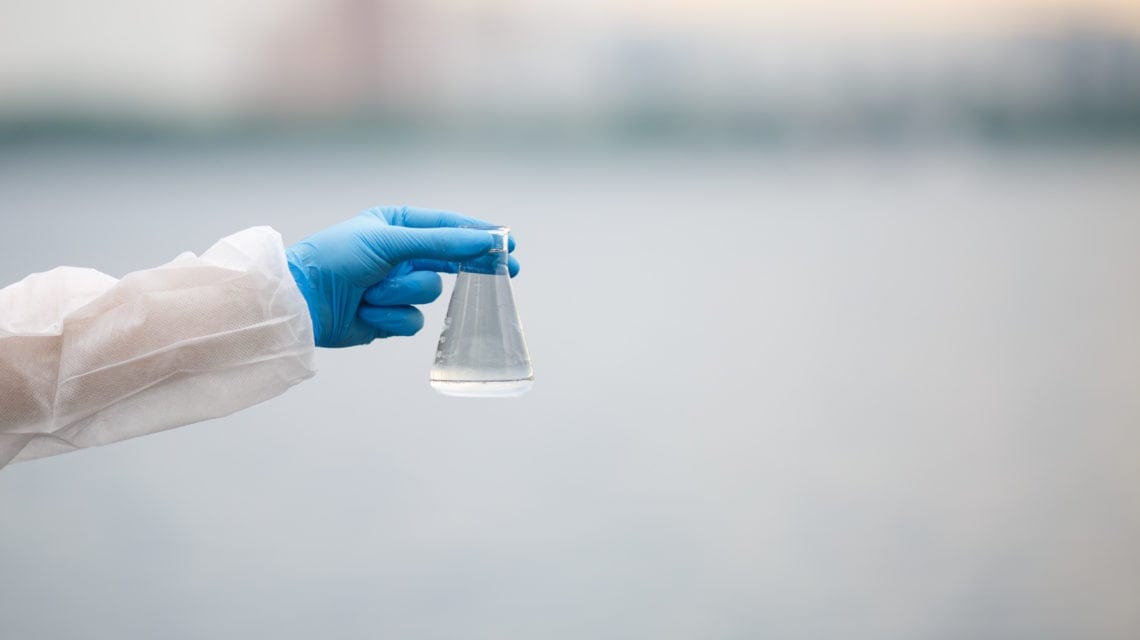Innovative solutions and strategies for managing soil and water contamination are explored by iEnvironmental Australia, addressing a critical issue in environmental conservation and rehabilitation. Discover how cutting-edge technology is revolutionizing the fight against soil and water contamination, offering hope for a cleaner, healthier planet.
Cutting-Edge Technologies for Soil and Water Remediation
Advancements in technology have revolutionized the approach towards remediation techniques. These technologies not only offer efficient solutions for contaminated soil and water but also ensure cost-effective outcomes. One such technique involves the use of bioremediation, where microorganisms are deployed to detoxify pollutants, particularly heavy metals, from contaminated sites. Additionally, the advent of nanotechnology in this field provides a more precise and efficient method of removing contaminants, significantly reducing the time and resources required for remediation.
- Electrokinetic Remediation – A groundbreaking technique, electrokinetic remediation, uses electrical currents to mobilize contaminants like heavy metals from contaminated soil. This method is particularly cost-effective for treating soils with low permeability, where traditional methods might struggle.
- Soil Washing – Soil washing involves physically separating the polluted components from the soil. This technique is effective in removing a wide range of contaminants, including heavy metals, and can be tailored to specific soil types and contaminant profiles, offering a versatile and cost-effective remediation option.
- Thermal Desorption – Thermal desorption uses heat to vaporize contaminants, making it an effective method for treating a variety of contaminated soil types. This technique is particularly adept at removing organic pollutants and can be engineered to minimize energy consumption, enhancing its cost-effectiveness.
- Immobilization – Immobilization involves the addition of materials to soil to chemically bind contaminants, reducing their mobility and bioavailability. This method is particularly useful for stabilizing heavy metals in soil, preventing further contamination and making it a cost-effective long-term solution.
- Chemical Oxidation – Chemical oxidation involves injecting oxidizing agents into contaminated sites to break down pollutants. This remediation technique is effective for a variety of contaminants, including hydrocarbons and certain heavy metals.
- Mycoremediation – Mycoremediation uses fungi to degrade or sequester contaminants from soil and water. Fungi have unique enzymes that can break down tough pollutants, offering a natural and cost-effective solution for remediating contaminated soil.
- Permeable Reactive Barriers – Permeable reactive barriers are installed underground to intercept and treat contaminated groundwater as it flows through. This passive and cost-effective approach is particularly useful for long-term remediation of heavy metals and other pollutants.
Harnessing Nature’s Power to Clean Up Contaminated Sites
Embracing nature-based solutions is another innovative approach in environmental restoration.
Phytoremediation, a process where plants are used to absorb, concentrate, and/or breakdown pollutants, is gaining momentum. This method is particularly effective in dealing with heavy metals and organic pollutants present in soil and groundwater. It not only cleans up contamination but also restores the ecological balance, promoting biodiversity.
Constructed wetlands mimic natural wetlands to treat contaminated water. Plants and microorganisms in these wetlands work together to remove pollutants, making it a sustainable and cost-effective method for water remediation.
Bioventing accelerates the natural in-situ biodegradation of contaminants in soil. By enhancing soil aeration, it stimulates the growth of pollutant-degrading microorganisms. This method is particularly effective for hydrocarbon contamination and offers a cost-effective solution for soil remediation.
Phytostabilization involves the use of plants to immobilize contaminants in the soil. This prevents the spread of pollutants, particularly heavy metals, by reducing their mobility and bioavailability, making it a sustainable and cost-effective approach.
Biochar, a form of charcoal, is used to improve soil quality and reduce pollutant mobility. Its porous structure and high surface area make it effective in adsorbing heavy metals and other contaminants, offering a cost-effective solution for soil improvement and remediation.
Green roofing involves planting vegetation on rooftops, which can absorb and filter pollutants from rainwater. This innovative approach not only aids in managing water contamination but also contributes to urban cooling and biodiversity.
Rhizofiltration uses plant roots to absorb and concentrate contaminants, particularly heavy metals, from water bodies. This method is especially effective for treating contaminated surface waters and is both sustainable and cost-effective.
Sustainable Solutions for Soil and Water Purification
Sustainability is key in modern environmental management practices. Green chemistry techniques, which focus on minimizing the generation of hazardous substances, are now increasingly applied in soil and water purification processes. These sustainable practices not only address current contamination issues but also prevent future environmental degradation.
- Solar-Powered Water Treatment
Harnessing solar energy to power water treatment plants offers a sustainable and cost-effective method of purifying contaminated water. This approach significantly reduces the carbon footprint associated with water purification processes.
- Zero-Valent Iron (ZVI) Technology
ZVI technology uses iron particles to remove pollutants, especially heavy metals, from soil and water. This method is highly effective and cost-effective, offering a more sustainable alternative to traditional chemical treatments.
- Biofiltration Systems
Biofiltration systems use natural materials like sand, peat, or compost to filter out contaminants from water. These systems are particularly efficient in removing organic pollutants, offering a sustainable and cost-effective solution for water purification.
- Green Infrastructure for Stormwater Management
Green infrastructure, including rain gardens and permeable pavements, helps in managing stormwater. This approach reduces runoff and filters pollutants, thereby purifying water in a sustainable and cost-effective manner.
- Nanofiltration
Nanofiltration employs membranes with nanoscale pores to remove contaminants, including heavy metals, from water. This technology offers a precise and cost-effective way to purify water, aligning with sustainable practices.
- Electrocoagulation
Electrocoagulation uses electrical charges to remove contaminants, such as heavy metals, from water. This technology is gaining popularity due to its effectiveness and cost-effective operation.
- Wet Oxidation
Wet oxidation involves treating contaminated water under high temperature and pressure, effectively oxidizing organic pollutants. This method is sustainable and efficient for treating high-strength wastewater.
Innovative Approaches to Environmental Restoration
Innovation in environmental restoration isn’t just about new technologies; it also involves rethinking strategies and methodologies. For instance, integrating geographic information systems (GIS) and remote sensing technology helps in accurately assessing and monitoring contaminated sites. This integration allows for a more strategic approach to remediation, ensuring that efforts are targeted and effective.
- Environmental DNA (eDNA) Analysis
eDNA analysis involves detecting genetic material released by organisms into the environment. This innovative technique helps in monitoring biodiversity and ecological health, aiding in targeted restoration efforts.
- Drone and Satellite Imaging
Using drones and satellites for environmental monitoring offers a comprehensive view of contaminated sites. This technology aids in identifying areas in need of restoration and monitoring the progress of remediation efforts.
- In-situ Chemical Reduction (ISCR)
ISCR involves injecting reducing agents into contaminated sites to degrade pollutants in place. This method is particularly effective for treating contaminated soil and groundwater, providing a sustainable restoration approach.
- Augmented Reality (AR) for Site Visualization
AR technology helps visualize contaminated sites and potential remediation strategies. This innovative approach aids in planning and implementing environmental restoration projects more effectively.
- Ecological Engineering
Ecological engineering combines engineering with ecological principles to restore and maintain ecosystems. This approach is innovative in tackling environmental challenges, including contaminated soil and water issues.
Protecting Our Planet’s Water Resources

Advanced Membrane Technologies
Advanced membrane technologies, like reverse osmosis and ultrafiltration, are highly effective in removing a broad spectrum of contaminants, including heavy metals, from water, making them vital for protecting water resources.
- Desalination
- Desalination technology, converting seawater to fresh water, is crucial in areas facing freshwater scarcity. Modern desalination techniques are becoming more sustainable and cost-effective, thereby contributing to water resource protection.
- Cloud Seeding
- Cloud seeding, a method to induce rain, can replenish water resources and dilute pollutant concentrations in water bodies. This innovative approach is being explored as a means to mitigate water scarcity and pollution.
- Water Reuse and Recycling
- Implementing water reuse and recycling systems is essential for sustainable water management. These systems treat and repurpose wastewater, reducing the demand on freshwater resources and preventing water pollution.
- Aquifer Recharge and Recovery
- Aquifer recharge and recovery involve artificially replenishing groundwater supplies. This method is vital for maintaining water resources, particularly in regions experiencing groundwater depletion.
- Ocean Cleanup Technologies
- Developing technologies to clean up marine pollution, including plastic waste and oil spills, is crucial for protecting ocean ecosystems. These technologies range from barrier systems to microorganism-based solutions.
At iEnvironmental Australia, our mission is to lead the way in innovative, cost-effective, and sustainable solutions for soil and water contamination management. Our team of experts is dedicated to providing top-notch services, ensuring the highest standards of environmental integrity and client satisfaction. We invite our readers to engage with us, share their thoughts, and explore our services for a healthier and cleaner environment.


